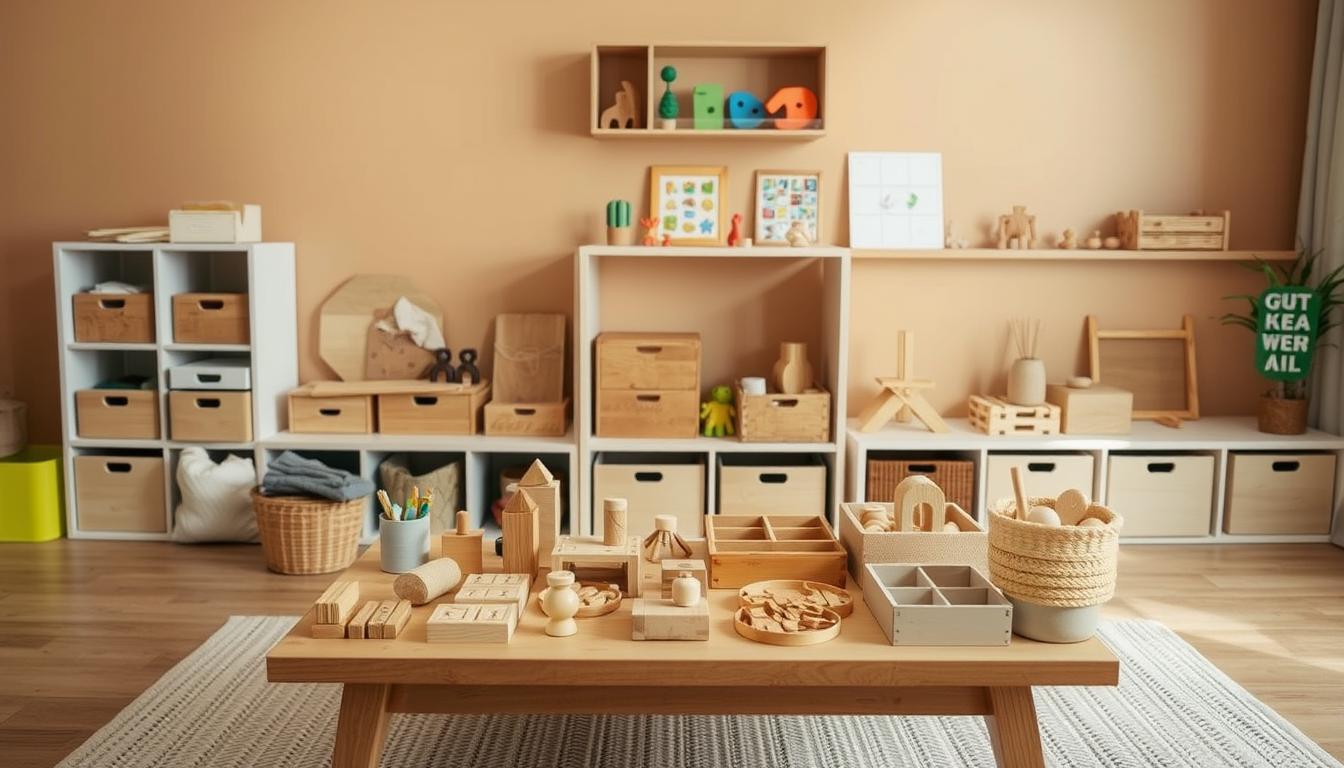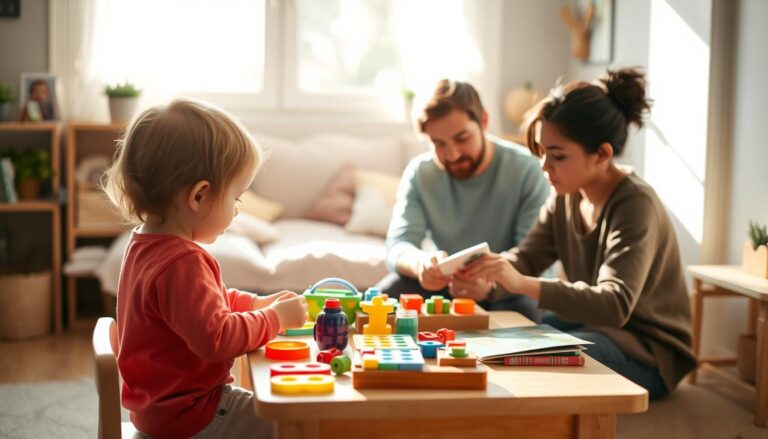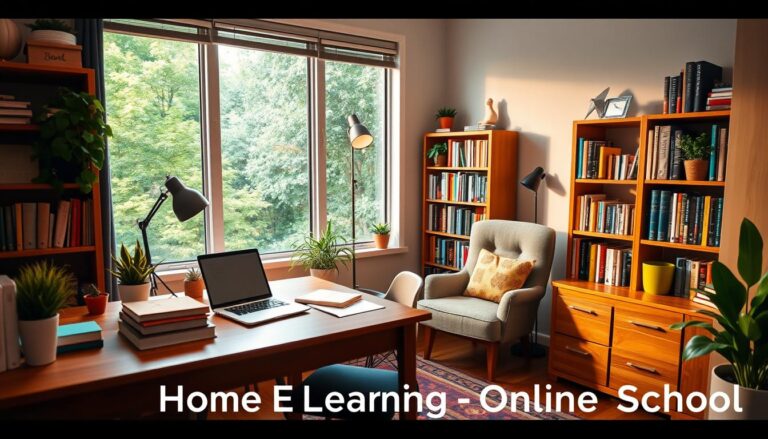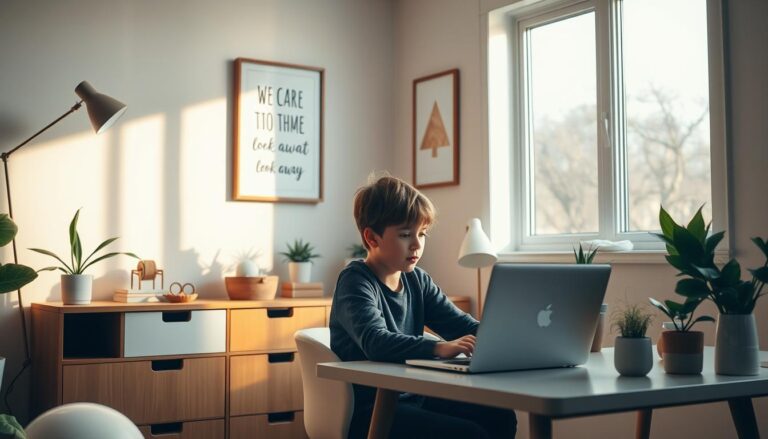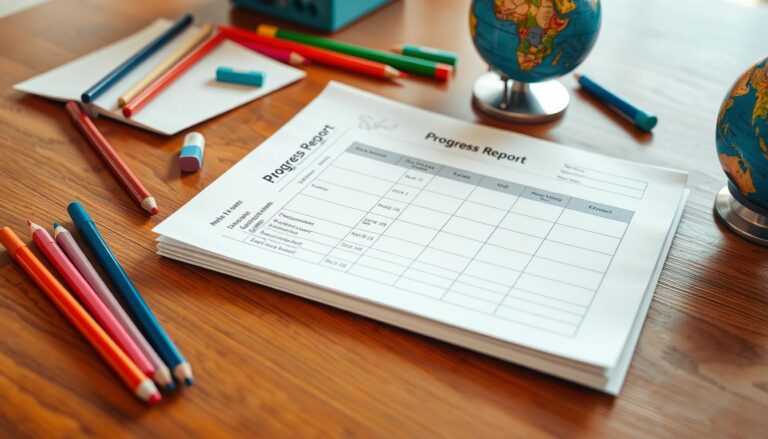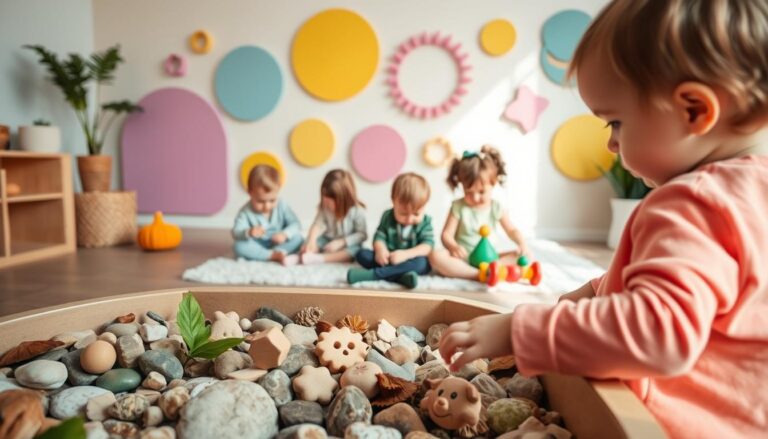DIY Montessori Activities Using Household Items
Ever wondered how everyday items around your house can transform into powerful learning tools for your child? Simple objects like spoons, jars, or even a piece of cardboard can spark creativity and build essential skills. The best part? You don’t need expensive materials to make it happen.
We believe in making learning accessible and fun. By using what you already have, you can create engaging tasks that encourage independence and exploration. These activities are designed to help children learn through hands-on experiences, fostering both practical and academic growth.
From scrubbing baby dolls to balancing exercises, these tasks are not just play—they’re a way to develop motor skills and confidence. Let’s dive into how you can turn your home into a space for active, meaningful learning.
Getting Started with DIY Montessori Activities
Transform your living space into a learning hub with simple, everyday items. By understanding the principles behind the Montessori approach, you can create meaningful experiences for your child. This method emphasizes self-directed discovery and hands-on learning, making it perfect for adapting to your home environment.
Understanding the Montessori Approach
The Montessori philosophy focuses on learning by doing. It encourages children to explore their interests independently. This approach helps build practical life skills, such as responsibility and confidence. For example, using child-sized tools in the kitchen can teach toddlers how to prepare simple meals.
Everyday tasks, like pouring water or folding towels, become opportunities for growth. These activities not only develop motor skills but also foster a sense of accomplishment. By starting with simple tasks, you lay the foundation for more complex learning later on.
Benefits of Hands-On Learning at Home
Hands-on learning offers numerous benefits for toddlers. It helps them develop independence and problem-solving skills. Engaging in practical tasks, such as washing dishes or organizing toys, teaches responsibility and discipline.
- Encourages self-motivation and focus.
- Builds fine and gross motor skills.
- Fosters a sense of ownership and pride in their work.
For older children, programs like the high school curriculum can further enhance these skills. By integrating hands-on learning into daily life, you create a supportive environment for your child’s growth.
Practical Life Activities to Foster Daily Skills
Simple household tasks can teach kids essential life skills while keeping them engaged. By involving children in daily routines, you help them develop independence, coordination, and a sense of responsibility. These activities are not just chores—they’re opportunities for growth and learning.
Kid-Friendly Kitchen Chores
Kitchen tasks are a great way to introduce practical skills. Start with simple activities like spreading crackers or peeling bananas. These tasks improve fine motor skills and hand-eye coordination. As children practice, they gain confidence and independence.
Here are a few examples of kid-friendly kitchen chores:
- Spreading butter or jam on bread.
- Helping to wash fruits and vegetables.
- Stirring ingredients in a bowl.
These activities make cooking fun while teaching valuable lessons about food preparation and safety.
Household Tasks to Build Independence
Beyond the kitchen, everyday tasks can also foster independence. Washing dishes, setting the table, or folding laundry are excellent ways to teach responsibility. These activities require focus and coordination, helping children develop essential motor skills.
Here are some household tasks to try:
- Sorting and organizing toys or books.
- Helping to set the table for meals.
- Wiping surfaces with a damp cloth.
By involving kids in these tasks, you create a sense of ownership and pride in their work. Over time, these practices become a natural part of their routine, preparing them for more complex responsibilities.
Creative Motor Skills Development
Encourage physical and creative growth with fun, skill-building tasks using items you already own. These exercises help children develop coordination, balance, and fine motor control. By incorporating everyday objects, you can create engaging activities that promote both physical and mental development.
Balance, Yoga, and Coordination Exercises
Simple household items like a sturdy box or a small basket can be used for balance and yoga exercises. For example, children can practice standing on one foot while holding a container for stability. Yoga poses like the tree pose or warrior pose can be adapted for kids using these items.
Here’s a quick guide to get started:
- Use a box as a stepping stone for balance practice.
- Place a basket on the floor for target-based coordination games.
- Encourage stretching and movement with yoga cards for kids.
Doll Washing and Real-Life Task Simulations
Simulating real-life tasks like doll washing helps children develop fine motor skills and coordination. Set up a small station with a container of water, a sponge, and a doll. This activity teaches responsibility while improving hand-eye coordination.
Steps to create a doll washing station:
- Fill a container with water and add a drop of soap.
- Provide a sponge or small cloth for scrubbing.
- Encourage children to dry the doll with a towel afterward.
Outdoor and Indoor Movement Games
Movement games are a great way to keep children active while enhancing motor skills. Use items like a ball, hula hoop, or even a set of cards to create fun challenges. These games can be played both indoors and outdoors, depending on the space available.
Here’s a comparison of indoor and outdoor games:
| Indoor Games | Outdoor Games |
|---|---|
| Balloon volleyball using a string as a net. | Obstacle course with cones and a basket. |
| Simon Says with movement cards. | Tag with a ball or hula hoop. |
| Hopscotch using tape on the floor. | Scavenger hunt with a list of items. |
These activities not only build physical skills but also foster creativity and confidence. By using everyday items, you can create a fun and engaging environment for your child’s development.
Language and Sensorial Play for Early Learners
Language and sensory exploration can be easily integrated into daily routines using items you already have around the house. These activities not only build essential skills but also make learning fun and engaging. By combining language exercises with sensory play, children develop a deeper understanding of their environment.
Engaging Language Games and Storytelling Boxes
Interactive language games like “I Spy” or rhyming scavenger hunts encourage children to look closely at their surroundings. These games help expand vocabulary and improve descriptive abilities. For example, you can create a storytelling box filled with small objects from around the house. Children can use these props to craft their own stories, sparking creativity and imagination.
Here are some ideas to get started:
- Use household items like spoons, buttons, or toy figures as storytelling props.
- Play rhyming games with objects found in the kitchen or living room.
- Encourage children to describe objects in detail during playtime.
Sensory Bins, Mystery Bags, and Scent Identification
Sensory bins and mystery bags are excellent tools for hands-on learning. Fill a bin with rice, beans, or pasta, and hide small objects inside. Children can dig through the bin to find the items, enhancing their tactile and problem-solving skills. Mystery bags, filled with everyday objects, encourage kids to use their sense of touch to identify items without looking.
Scent identification is another fun activity. Use spices, herbs, or fruits to create scent jars. Children can guess the scents, which helps sharpen their sense of smell and builds cognitive connections.
Here’s a comparison of sensory activities:
| Sensory Bins | Mystery Bags | Scent Identification |
|---|---|---|
| Fill with rice, beans, or pasta. | Use fabric bags with hidden objects. | Create jars with spices or fruits. |
| Encourages tactile exploration. | Develops touch-based identification. | Sharpens sense of smell. |
| Improves fine motor skills. | Enhances problem-solving abilities. | Builds cognitive connections. |
These activities create multisensory experiences that support holistic early learning. By using items from around the house, you can help children explore their environment while developing essential skills.
montessori activities at home for Fine Motor and Cognitive Skills
Simple tasks using everyday materials can significantly enhance your child’s development. By focusing on fine motor and cognitive skills, you create opportunities for growth and learning. These activities are not only engaging but also practical, using items you already have at home.
Puzzle Challenges and Sorting Games
Puzzles and sorting games are excellent for developing problem-solving abilities. They encourage children to match shapes, colors, and sizes, which enhances cognitive processing. For example, a tray with different-sized buttons can be used for sorting tasks. This activity improves hand-eye coordination and fine motor skills.
Here are some tips to get started:
- Use a tray to organize materials like beads or blocks.
- Start with simple puzzles and gradually increase complexity.
- Encourage children to sort objects by size, shape, or color.
Matching Cards and Hands-on Crafts
Matching cards and craft projects are perfect for refining fine motor skills. These activities require precision and focus, helping children develop hand-eye coordination. For instance, matching cards with images or patterns can be paired with a tray for organization.
Hands-on crafts, like threading beads or cutting paper, also promote creativity. These tasks use everyday materials, making them easy to set up at home. Adjust the size and complexity of the tasks to match your child’s ability.
Here’s how to incorporate these activities:
- Use matching cards to create memory games.
- Provide materials like yarn, beads, and scissors for crafts.
- Encourage children to describe their creations to enhance language skills.
By scaling activities to your child’s level, you ensure they remain challenged but not overwhelmed. These tasks not only build fine motor skills but also support overall cognitive development. With the right materials and a little creativity, you can turn your home into a space for meaningful learning.
DIY Science and Music Projects with Everyday Items
Turn everyday items into exciting science and music adventures for your child. These projects blend creativity with learning, making them perfect for hands-on exploration. From water experiments to DIY instruments, we’ll show you how to create engaging activities using simple materials.
Water Experiments and Magnetic Discoveries
Water experiments are a fantastic way to introduce scientific concepts. For example, the Sink or Float Challenge uses household items like corks, rocks, and toy cars. Fill a tub with water and let your child predict which items will sink or float. This activity encourages critical thinking and observation.
Magnetic discoveries are equally exciting. Use magnets to explore attraction and repulsion with items like paper clips, coins, or even small toys. These experiments teach basic physics principles while keeping kids engaged.
Create Your Own Musical Instruments
Making musical instruments at home is both fun and educational. Use materials like paper, rubber bands, and jars to craft unique sounds. For instance, a water xylophone can be made by filling jars with different water levels and tapping them with a spoon. This project introduces the concept of sound waves and pitch.
Here’s a comparison of DIY musical instruments and their materials:
| Instrument | Materials |
|---|---|
| Water Xylophone | Jars, water, spoon |
| Paper Kazoo | Paper, rubber bands, straw |
| Drum Set | Empty containers, balloons, sticks |
These projects not only teach music but also encourage creativity and problem-solving. For more ideas, check out these DIY Montessori science activities.
Conclusion
Using everyday items to create meaningful learning experiences can make a big difference in a child’s development. Simple tasks like setting the table or playing with a ball help build practical life skills and a sense of responsibility. These hands-on projects encourage independence and self-directed learning.
We’ve explored how creative motor development, language games, and sensory play can enhance a child’s growth. These activities not only teach important concepts but also build confidence and lifelong skills.
Start small and consistent. Incorporating these ideas into daily routines can foster independence and skill mastery. Every child may learn at their own pace, but with the right approach, they’ll thrive. For additional support, feel free to contact us for personalized guidance.

